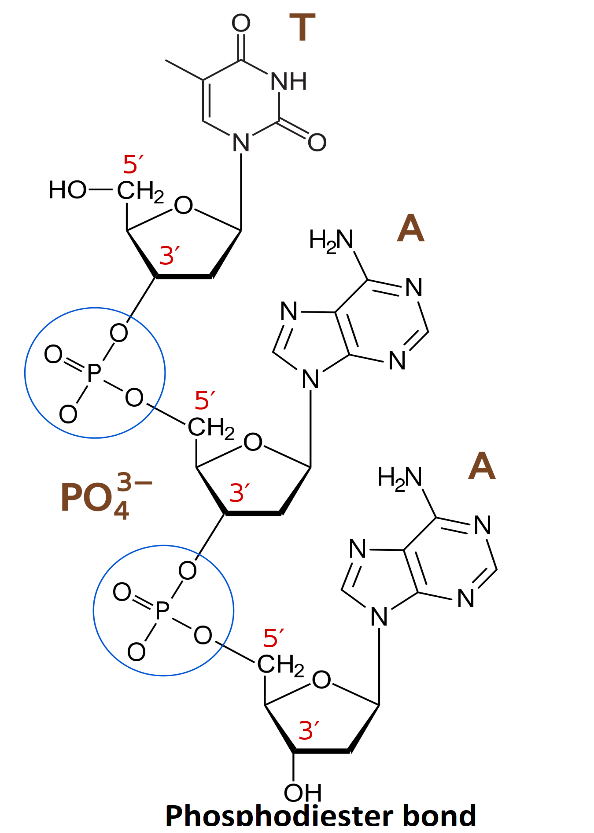
What is the phosphodiester bond and how it is drawn?
Answer
471.9k+ views
2 likes
Hint:To solve this question, first we have to understand the term phosphodiester bond. To draw a phosphodiester bond, we should have prior knowledge about the connectivity which leads to the formation of the bond.
Complete answer:
Phosphodiester bond is universal to all the life forms which are present on the earth because the phosphodiester bond is present in the backbone of both DNA and RNA. DNA stands for deoxy ribonucleic acid and RNA stands for ribonucleic acid. The DNA consists of two polynucleotide chains which are connected by the strong electromagnetic attraction also known as the phosphodiester bond.
The Phosphodiester bond is a covalent bond which is generally formed between the phosphate group of
Phosphodiester linkage is shown below:

Note:
The formation of Phosphodiester bonds is a synthetic process or also known as building up process. Thus, it is an anabolic process. An anabolic process is the process in which energy is used along with the elimination of the water molecule. The bond formed in the Phosphodiester bond is a covalent bond.
Complete answer:
Phosphodiester bond is universal to all the life forms which are present on the earth because the phosphodiester bond is present in the backbone of both DNA and RNA. DNA stands for deoxy ribonucleic acid and RNA stands for ribonucleic acid. The DNA consists of two polynucleotide chains which are connected by the strong electromagnetic attraction also known as the phosphodiester bond.
The Phosphodiester bond is a covalent bond which is generally formed between the phosphate group of
Phosphodiester linkage is shown below:

Note:
The formation of Phosphodiester bonds is a synthetic process or also known as building up process. Thus, it is an anabolic process. An anabolic process is the process in which energy is used along with the elimination of the water molecule. The bond formed in the Phosphodiester bond is a covalent bond.
Latest Vedantu courses for you
Grade 11 Science PCM | CBSE | SCHOOL | English
CBSE (2025-26)
School Full course for CBSE students
₹41,848 per year
Recently Updated Pages
Express the following as a fraction and simplify a class 7 maths CBSE

The length and width of a rectangle are in ratio of class 7 maths CBSE

The ratio of the income to the expenditure of a family class 7 maths CBSE

How do you write 025 million in scientific notatio class 7 maths CBSE

How do you convert 295 meters per second to kilometers class 7 maths CBSE

Write the following in Roman numerals 25819 class 7 maths CBSE

Trending doubts
State and prove Bernoullis theorem class 11 physics CBSE

What are Quantum numbers Explain the quantum number class 11 chemistry CBSE

Write the differences between monocot plants and dicot class 11 biology CBSE

Who built the Grand Trunk Road AChandragupta Maurya class 11 social science CBSE

1 ton equals to A 100 kg B 1000 kg C 10 kg D 10000 class 11 physics CBSE

State the laws of reflection of light




